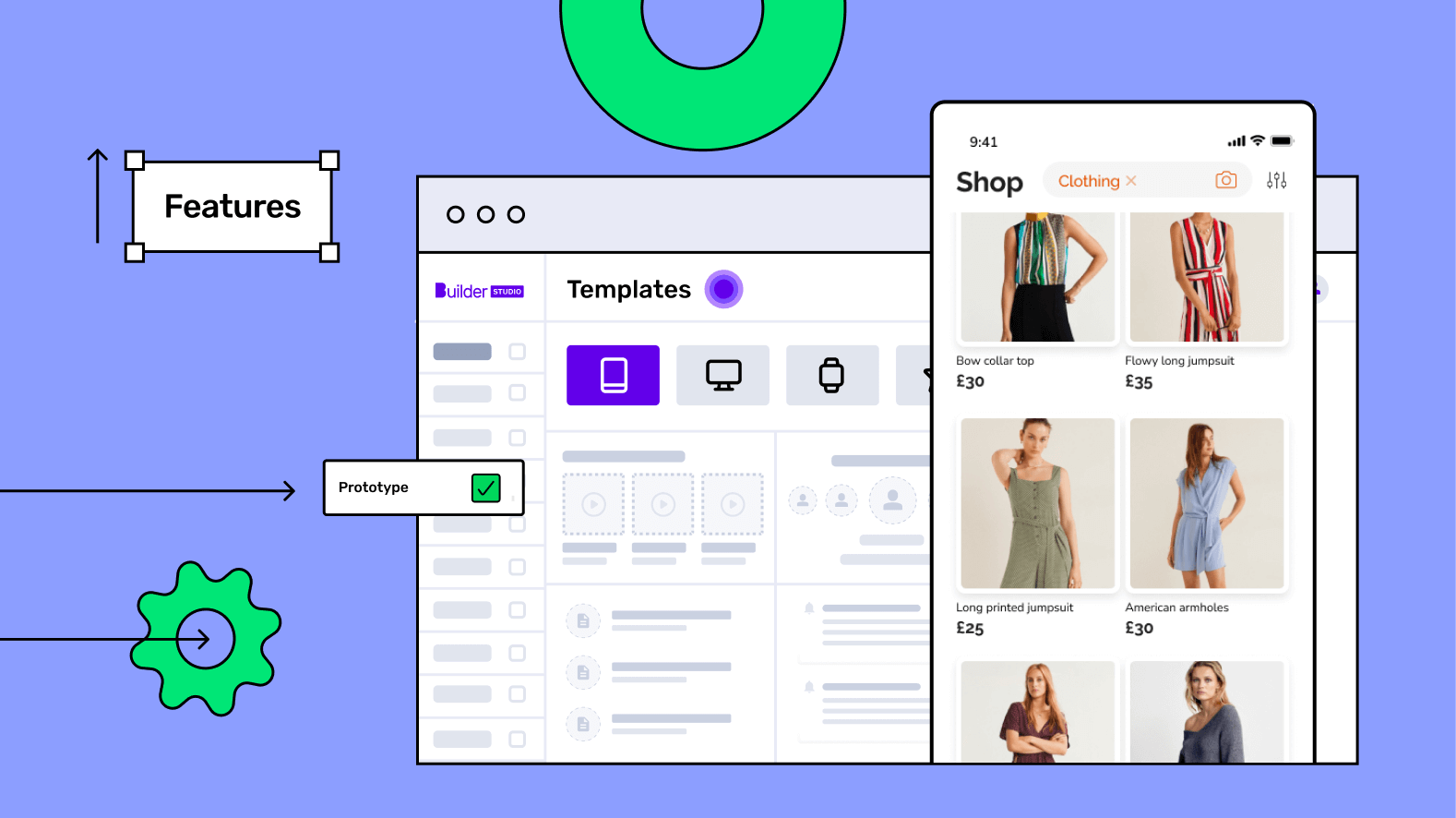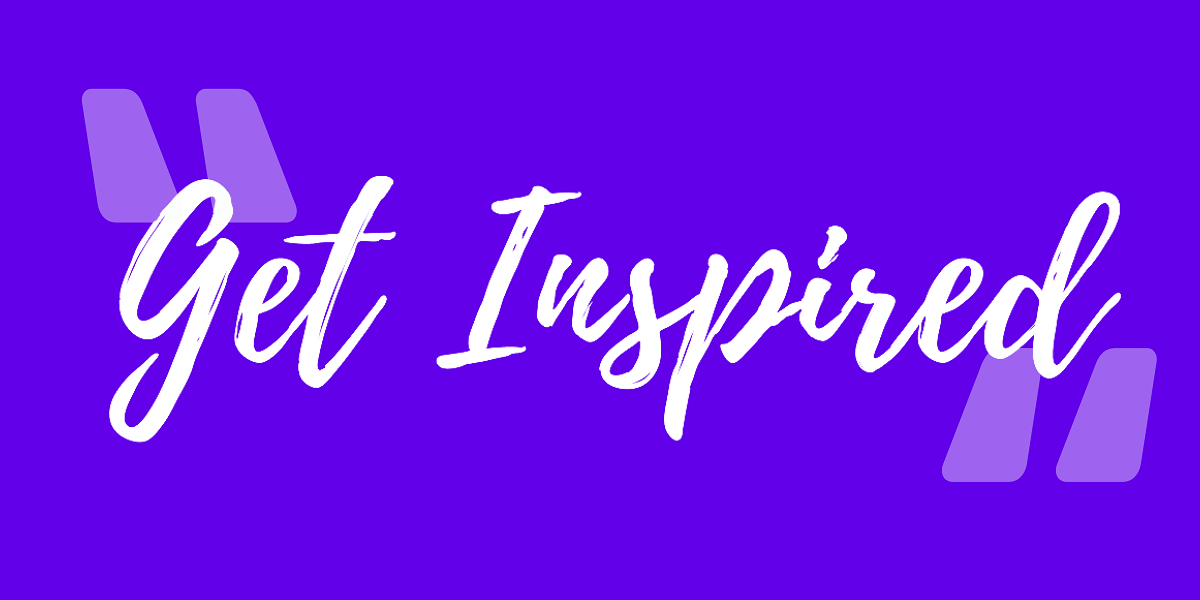Merely having a website that looks great and loads fast isn't a luxury:
It’s table stakes for survival.
That's because modern customers expect the rich shopping experiences provided by marketplaces like Amazon, Walmart and eBay as standard.
To grow your ecommerce business, then, you need to think like big players and provide customers with ecommerce website features that deliver a great shopping experience from product discovery to checkout.
The good news is, we're going to reveal 11 of these features in this blog and the customer outcomes they enable.
Time to buckle in and get scrolling 👇
1 - User-friendly navigation
You don’t want your potential customers to search around your online store aimlessly before abandoning ship faster than you can say "basket".
That's why having a convenient, user-friendly navigation on your ecommerce website is your first step to success.
This should function exactly as it does when you walk into a physical store:
Everything is easy to find because it's properly labelled and categorised, while there are clear signposts to other related items that maximise your chances of upselling.
Meanwhile, clear and effective calls to action (CTAs) should make it as easy as possible for customers to make a decision, whether this is "add to shopping cart," "request a quote" or "buy now".
If your customers can move through your ecommerce store without any hiccups all the way through to the checkout process, you've got a great chance of them coming back for more.
2 - Search and filter options

Almost all big ecommerce websites provide their customers with search and filter options. Why?
Because 43% of users on websites go directly to the search bar and users that do are up to 3X more likely to convert.
Let's use an example to illustrate this.
Say you sell watches online and your customer is looking for something specific. Their requirements are for it to:
- Be gold plated
- Have a 45mm case size
- Cost up to $300
Instead of asking these customers to find a needle in a haystack, your website should have the functionality to provide them with relevant options that match their intent.
Search navigation bars simply allow customers to type in what they want and filters help them narrow down their choices based on price, colour, size, delivery and more.
Ultimately, search and filter options are like personal store guides that assist your customers in finding their perfect item as quickly as possible and provide a frictionless shopping experience on your website.
3 - Product catalogue
Customers want to see products they're about to buy under the microscope before taking the final leap. As a result, simply having a single photo of the product doesn't cut it anymore.
This is why a scrollable carousel feature is a must-have on your ecommerce website. This enables you to showcase multiple product images and videos that entice customers to make a purchase.
What's more, by providing a truer representation of the product on your site, you can drastically reduce ecommerce return rates. This is because one of the main culprits behind the high return rate is the product not matching the product description, accounting for 64.2% of the total returns.
Top tip
Beyond enabling zoom and adding product details to accompany multimedia, you should also add the measurements of the people modelling your items, where relevant. Aside from product reviews, this helps customers make a decision on the right size based on their body type.
4 - Web push notifications
Push notifications for websites?
Yep, you read that right. These are a great way to communicate with your customers and open up a plethora of targeting and retargeting opportunities.
Web push notifications keep your customers engaged at every step of their buying journey and make them return to your website with discounts, promotions and product updates.
Using web push notifications, you can share exciting news with your customers, keep them updated with the latest happenings and create personalised experiences that go beyond simple transactions.
5 - User review and ratings
Did you know that 93% of customers say that online customer reviews have made an impact on their purchase decision?
What’s even more striking is that products with 4-star ratings getting 11.6 times more orders than those with 3-star ratings.
In online shopping, customers don’t get the ability to touch or feel the products, meaning customers rely on social proof to validate their purchase decisions. And when combined with crisp, well-lit individual product images, your positive reviews and ratings will do a lot of heavy lifting when you sell online.
This is why encouraging your customers to post their ratings and reviews is so essential.
To ensure they have maximum impact, display product reviews where customers can see them.
Although this might sound daunting, the impact of any negative reviews will be mitigated by your response to them, helping you build your brand.
6 - Personalisation
Creating a tailored user experience for every customer visiting your ecommerce website may be a challenge, but it's one you have to take on.
That's because 74% of customers get frustrated when website content isn’t personalised. To ensure this doesn't happen, you need to call on your biggest ally:
Data.
And you'll find a well of it in your ecommerce website that allows you to better understand customer preferences and recommend products to them according to their needs.
After all, every customer treads a different path when it comes to interacting with your brand and personalisation helps you build trust with them at every stage. You could leverage the following tactics to do this:
- Personalised homepages- provide customers with relevant content that's tailored to their interests, enhancing product discovery, saving time and ultimately delivering higher conversion rates
- Personalised coupon codes, discounts and offers- increase customer retention by rewarding repeat customers
- Post-purchase recommendations- introduce customers to relevant and related products to encourage extra purchases
- Personalised emails and reminders- increase customer engagement and conversion by leveraging product recommendation emails and abandoned cart reminders
Want to build your online store?
Book a demoSpeak with one of our product experts today.
By proceeding you agree to Builder.ai’s privacy policy and terms and conditions

7 - Multiple payment options
High shopping cart abandonment rates can be frustrating, especially when 7% of shoppers abandon their carts due to a lack of payment methods.
Cart abandonment can also skyrocket if your checkout process contains friction points like overly long forms, unclear calls to action (CTAs) or limited payment options.
As time is of the essence once your customer adds products to their cart, the best way to increase conversions is to reduce these friction points, offering customers the ability to:
- Checkout as guest
- Pay instantly with Apple Pay or Google Pay
- Pay with both debit and credit cards
Taking these steps will not only increase your revenue by up to 30%, but it'll also be super convenient for your customers as they can complete their purchase without any hiccups.
8 - Delivery options
Customers are spoilt for choice when it comes to delivery options.
Same-day deliveries are increasingly coming into play, while next-day options like click and collect, and curbside pickup are also proving popular. In other words, long and slow delivery times are a thing of the past, with 19% of customers citing it as a primary reason for abandoning their carts.
That's exactly why your ecommerce website needs logistics integrations that provide multiple delivery options like these at the lowest shipping cost possible:
- Buy online pick up in store (BOPIS)
- Buy online return in store (BORIS)
- Buy online ship to store (BOSS)
Multiple shipping options help you tailor your services to fit each customer’s unique needs and allow them to choose how and when they want their products delivered.
9 - Order tracking
In the world of endless orders and confirmations, order tracking works as the North Star, guiding your customers on what’s headed where.
Crucially, order tracking provides transparency and visibility to your customers at all stages of their ordering journey – be it order confirmation, packing, dispatch, out for delivery and finally, delivered.
This is a must-have feature for your ecommerce website because not only do 80% of customers want the ability to track orders, but also more than 70% of all online retailers are already giving their customers this ability.
A bonus benefit of this functionality is that it frees up your customer service teams from manually providing updates to customers, helping them focus on more strategic tasks.
10 - Social media integration
Social media is like a bustling town square where people gather to share their stories and connect with each other. And that’s exactly why you need to connect your website with your social media handles.
You can use social media to build awareness of your website, identify and connect with sales prospects and even use it for an altogether new way of selling, social commerce.
This allows customers to browse and buy products on the platforms they already hang out in, streamlining the conversion funnel.
What's more, social commerce adds another revenue stream to your business, making you more financially sustainable.
11 - Analytics dashboard
Analytics dashboards provide a birds-eye view of your entire ecommerce sales and operations.
And with access to these kinds of customer and business insights, you can make smart, data-driven decisions that help you scale.
For example, with an analytics dashboard, you can track which products are flying off shelves, which geographies aren’t performing as intended and which products you can provide discounts on.
You can also plan new marketing campaigns and track their impact on your sales, while tracking important website metrics like:
- Conversions
- Revenue
- Customer acquisition cost (CAC)
- Average order value (AOV)
- Bounce rate
- Cart abandonment rate
Conclusion
When running an ecommerce business, customer experience is the most sustainable, long-term strategy you can invest in.
And by leveraging the features above, you can stay ahead of the competition, fostering customer loyalty and generating repeat business.
Conveniently, Studio Store by Builder.ai provides all of these key ecommerce website features (and a boat-load more).
Kick off your ecommerce journey by hitting the banner below 👇
Want to build your online store?
Book a demoSpeak with one of our product experts today.
By proceeding you agree to Builder.ai’s privacy policy and terms and conditions

Ananth Ramanathan runs Studio Store business at Builder.ai with a mission of digitising a 1M+ micro SMEs in the next 5 years. He oversees the commercial, product, and customer success functions to rapidly scale Studio Store globally. Ananth's an experienced tech business operator, a failed entrepreneur, and an active angel investor.













 Facebook
Facebook X
X LinkedIn
LinkedIn YouTube
YouTube Instagram
Instagram RSS
RSS


